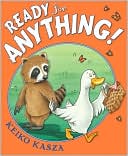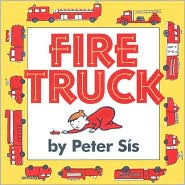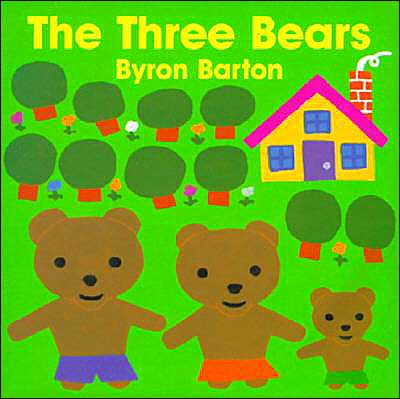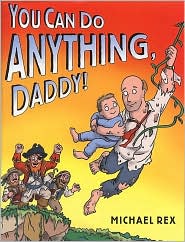Animals Storytime Handout animalhandvocabcarolwagstaffdouglascolplby Carol Wagstaff, Douglas County (CO) Public Library
Now It's Time to Read a Book Song
Now It's Time to Read a Book: to the tune of London Bridge Is Falling Down:Now it’s time to read a book, Read a book, Read a book Now it's time to read a book I’ll read a book to you. This song can be used as a transition into reading the next book to help instill print motivation, the enjoyment of books. Songs help children make smooth transitions from one activity to another. As children come to know the song, they can sing it at home when they want to read to a parent/adult or when they want an adult to read to them.
Ready for Anything by Keiko Kasza

Submitted by Sophie Bruno, Sacramento (CA) Public Library
Songs
Sing songs in English and in at least one other language during storytime.Early Literacy Aside--Empower: Adults, you can sing anywhere about anything in any language! Singing helps children hear the smaller sounds in words to help them sound out words later. Also many songs have new words for them to learn which will help them know the meanings of words when they get to school.
Randi Kay Stephens, Sacramento (CA) Public Library
Magnet handout
Early Literacy Aside--Empower: I am gong to give you a pre-literacy skill magnet that says "Talking" to put on your frig. This will remind you to extend your conversations with your children. In this way you are building on what they know and they will be able to better understand what they read. The magnet also lets you know you are already your child's first teacher! Great job, parents!Workshop Participant, Sacramento (CA) Public Library
Prepositions
Early Literacy Aside--Empower: When you go to play in the park next time with your children, talk about some of the concepts we talked about today--over/under, top/bottom, left/right. The best way for children to learn these concepts is not by memorizing what they mean, but by learning them as they are playing. By helping them learn these concepts, they will later better understand what they read.Natalie Beaver, Sacramento (CA) Public Library
My Face Book by Star Bright Books--bilingual books
Video clip on using bilingual books, example of My Face Book from Star Bright Books
Video clip here
Shapes That Roll by Karen Nagel--Video Clip
Video clip demonstration of Empower Aside using Shapes That Roll and other manipulatives.
Click here
Saroj Ghoting, Early Childhood Literacy Consultant
Print Awareness and Writing--Video Clip
Video clip of Empower Aside connecting print awareness and writing
Click here
Saroj Ghoting, Early Childhood Literacy Consultant
Effective Early Literacy Aside--Video Clip
Video clip explanation and demonstration of ineffective and effective early literacy asides.
Click here
Saroj Ghoting, Early Childhood Literacy Consultant
Old Macdonald Had a Farm Handout
Early Literacy Aside--Empower: Today we talked about farm animals and sang Old Macdonald. Here is an activity sheet for you and your child to draw farm animals and talk about the sounds they make, which is a first stem to helping your children hear the smaller sounds in words. Don't worry if you can't figure out which animal your child has drawn. Your child will tell you what it is. Enjoy!
Playing with Directional Words
Early Literacy Aside--Empower: We can help children learn new words as we play with them. In today's storytime we read We're Going on a Bear Hunt which had directional words. Here is a game you can play. Show your child an item (a shoe perhaps) and hide it in a room with a little of it showing. Give your child hints about where to find it using position words like right, left, above, below, and so on. You can also give clues like, "You're getting warmer or colder" as they get closer or farther away. Here is a handout with the game and some activities to support pre-reading skills.
Jack and Jill Rhyme and Song
Nursery Rhyme: Jack and Jill
Jack and Jill went up the hill
To fetch a pail of water
Jack fell down
And broke his crown
And Jill came tumbling after.
Preparation: Have the words to the rhyme up on a chart. Have the group say, not sing, the words. Then have the group sing the rhyme. Ask the adults what differences they noticed when singing it vs. saying it.
Early Literacy Aside--Example: Singing slows down language so that children can hear the smaller sounds in words. This helps children later to sound out the words when they learn to read.
Please, Baby, Please by Spike and Tonya Lee

Introduction: Our book today is called Please, Baby, Please written and illustrated by Spike and Tonya Lee. Some of the things this baby does may look quite familiar to you! When you read this book to your baby, you can read the words or talk about the pictures.
Read book Please, Baby, Please by Spike and Tonya Lee. When you read the book with your child, don’t worry about getting through the whole book! Leave a little time when you are talking about the pictures, to let your child babble back to you. Now let’s all say this phrase, “please baby please” together. I’ll read part of this book again and let’s all chime in with “please baby please." You’ll notice I made this phrase repeat throughout so your toddler can join in. It is easier with the repetition. You may also like to try sign language. For children who are pre-verbal, can’t say words yet, using gestures is one way they make themselves understood. Just be sure to SAY the words as you use the gestures and encourage your child to do so as well. [See attachment for signs.]
Early Literacy Aside--Example: By encouraging your child to speak, to repeat words, you are helping to develop their narrative skills. This is the expressive part of language which later helps to develop comprehension when they read. Even giving time for your baby to babble as you share books together is helping with to develop this skill.
Sign language please baby please
Fire Truck by Peter Sis

Introduction: This book Fire Truck, written and illustrated by Peter Sis, has lots of interesting words in it.
Early Literacy Aside--Example: Listen to the many different words your child is hearing, words we might be using in everyday conversation. Because books have three times as many rare words as we use in conversation, it is important for children to hear the language of books. As I'm reading this book, just hold up a finger when you hear a word you would not be using everyday when talking with your child. Then we'll see how many you heard at the end of the book.
Read the book. Ask how many words they heard that they would not use in conversation with their children.
Early Literacy Aside--Empower: As you read books at home with your children, you may notice some words they are not familiar with. You don't have to explain every unfamiliar word, but you might choose one to point out and explain. Don't replace unfamiliar words, or they won't hear them. This is how you help their vocabularies grow!
Three Bears by Byron Barton
 Early Literacy Aside--Explain: Narrative skills is the ability to talk about events and tell stories. Having children tell you what they are thinking, talk about things that happen, or tell you stories is later going to help them understand what they read.Read The Three Bears and have children help you retell the story using props or a flannel board.
Early Literacy Aside--Example: Retelling stories helps children understand what they read. Using props found around home can help children remember and retell stories.
Early Literacy Aside--Empower: When children do what is called dramatic play, when they act out stories, this kind of play helps children understand the structure and story and helps them understand the story itself. Play is a great way to support later reading.
Early Literacy Aside--Explain: Narrative skills is the ability to talk about events and tell stories. Having children tell you what they are thinking, talk about things that happen, or tell you stories is later going to help them understand what they read.Read The Three Bears and have children help you retell the story using props or a flannel board.
Early Literacy Aside--Example: Retelling stories helps children understand what they read. Using props found around home can help children remember and retell stories.
Early Literacy Aside--Empower: When children do what is called dramatic play, when they act out stories, this kind of play helps children understand the structure and story and helps them understand the story itself. Play is a great way to support later reading.
Submitted by Sue Smith, Independence Library, Public Library of Charlotte and Mechlenburg County (NC)
You Can Do Anything, Daddy by Michael Rex

Animal Boogie by Debbie Harter

Talking while reading
 Early Literacy Aside--Explain: Talking with your children while reading, encouraging them to make comments and ask questions is one way to share a book that develops your child's understanding of the book. Make reading with your child a postive experience by allowing your child to make comments and ask questions. Try to focus all your attention on your child for that time.During the storytime, demonstrate these techniques with one or more of your books. Point out what you are doing.
Early Literacy Aside--Empower: Talking with your children and giving them time to respond is supervaluable, even in a conversation consisting entirely of baby babble. This helps your children develop conversation skills. Remember that it can take young children from 5 to 12 seconds to process a question and formulate a response, so it's really important to gie them that extra time to express themselves.
Early Literacy Aside--Explain: Talking with your children while reading, encouraging them to make comments and ask questions is one way to share a book that develops your child's understanding of the book. Make reading with your child a postive experience by allowing your child to make comments and ask questions. Try to focus all your attention on your child for that time.During the storytime, demonstrate these techniques with one or more of your books. Point out what you are doing.
Early Literacy Aside--Empower: Talking with your children and giving them time to respond is supervaluable, even in a conversation consisting entirely of baby babble. This helps your children develop conversation skills. Remember that it can take young children from 5 to 12 seconds to process a question and formulate a response, so it's really important to gie them that extra time to express themselves.
Submitted by Cindy Christin, Bozeman (MT) Public Library and Tracey J., Sacramento (CA) Public Library
Songs
 Early Literacy Aside--Explain: Singing songs is one good way for children to become aware of the different sounds that make up words. We call this phonological awareness. Singng helps them get a feel for the rhythm of language and how words are divided into syllables because there is a different note for each syllable. This will help them sound out words when they learn to read.
Submitted by Cindy Christin, Bozeman (MT) Public Library
Early Literacy Aside--Explain: Singing songs is one good way for children to become aware of the different sounds that make up words. We call this phonological awareness. Singng helps them get a feel for the rhythm of language and how words are divided into syllables because there is a different note for each syllable. This will help them sound out words when they learn to read.
Submitted by Cindy Christin, Bozeman (MT) Public Library
